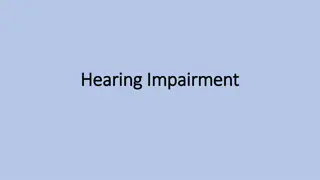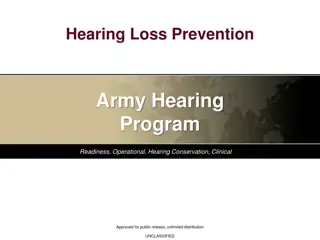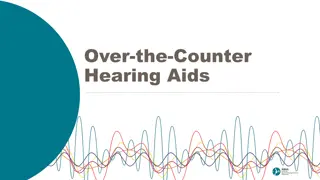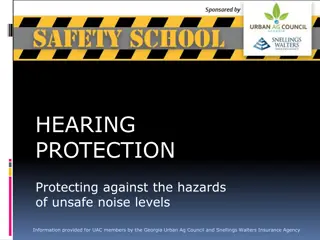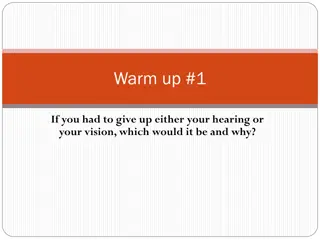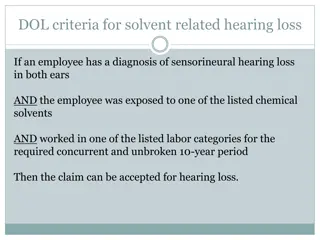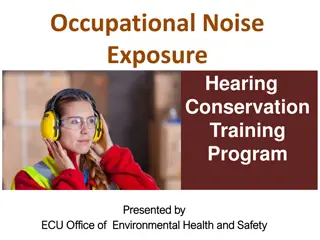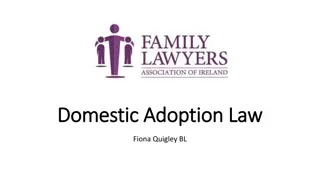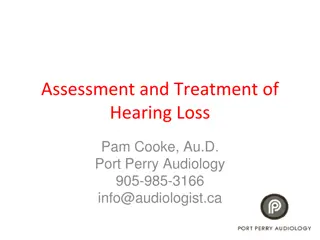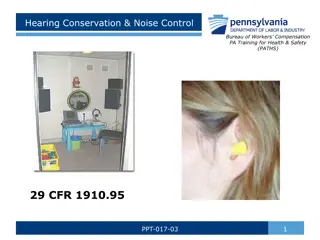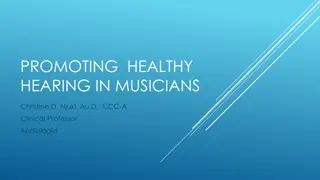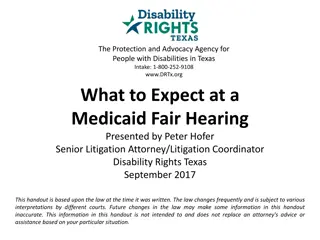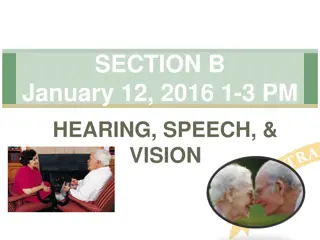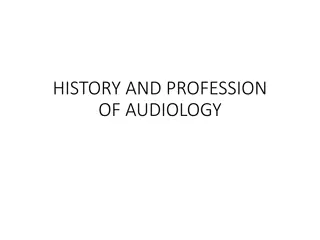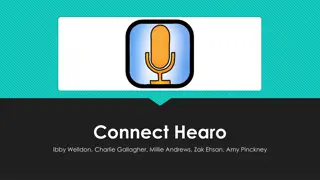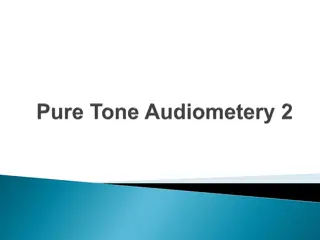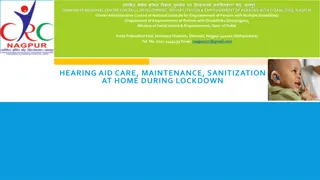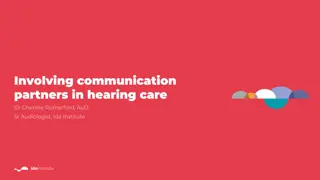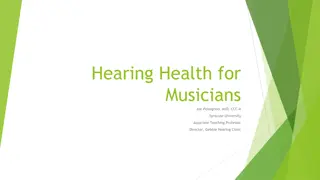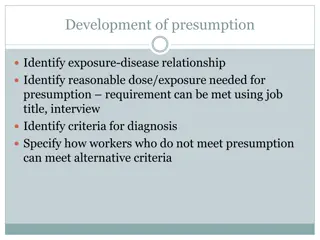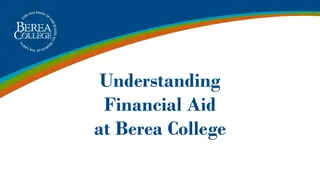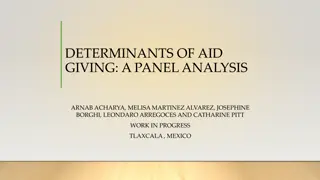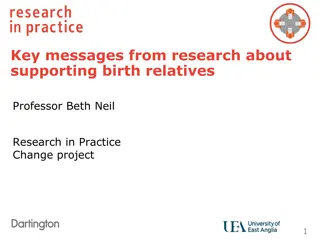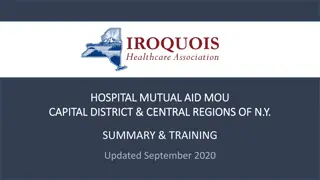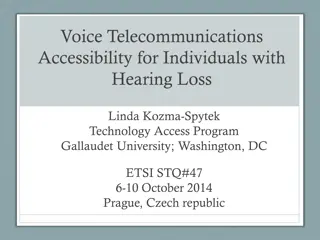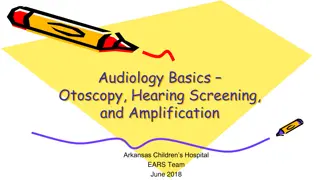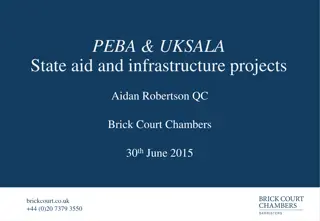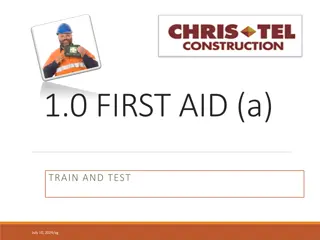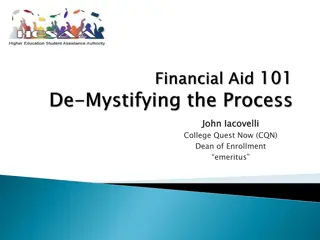Understanding Audiological Outcomes and Improving Hearing Aid Adoption
This presentation by Deborah von Hapsburg, Ph.D., delves into audiological outcomes and the need for change in the field of audiology. It discusses the patterns of outcomes, counseling approaches, and the relationship between client outcomes and counseling. The data presented covers topics such as hearing aid adoption rates, time between diagnosis and hearing aid use, and barriers to treatment faced by clients. The audience is prompted to ask essential questions regarding meeting the needs of the hearing loss population, understanding treatment barriers, and empowering clients to seek appropriate care.
Download Presentation

Please find below an Image/Link to download the presentation.
The content on the website is provided AS IS for your information and personal use only. It may not be sold, licensed, or shared on other websites without obtaining consent from the author. Download presentation by click this link. If you encounter any issues during the download, it is possible that the publisher has removed the file from their server.
E N D
Presentation Transcript
AUDIOLOGICAL OUTCOMES AND THE NEED FOR CHANGE Deborah von Hapsburg, Ph.D.
GOALS Goal 1: To provide an overview of the outcome patterns in audiology practice Goal 2: To examine counseling patterns in informational counseling Goal 3: To explore the relationship between client outcomes and counseling patterns Slide 2 27.9.2024
ACTIVITY PART I: THE COLOR OF MY HAIR - VIDEO Slide 3 27.9.2024
HEARING AID ADOPTION RATES IN MILLIONS 50 45 HA Adoption (%) 42.5 41.1 38.8 40 34 35 30 24.6 24.6 25 20 14.1 15 10 5 0 Country 34.5 million have hearing loss, 8.4 million own hearing aids
HOW LONG BETWEEN DIAGNOSIS AND HEARING AID? Owners Non-adopters Mean (average) 13 9
ACCORDING TO MARKETRAK VIII/IX Hearing Aids Never Used -"in the drawer account for 12.4% of fittings and represent more than 1 million patients. MarkeTrak IX suggests that approximately 11.2% of fittings are used at a frequency that varies from never to less than on a monthly basis, with approximately 3% being never used . Kochkin et al suggest that 4 million people who could benefit from hearing aids will not purchase them because of the poor experiences of their friends and relatives. Slide 6 27.9.2024
QUESTIONS WE SHOULD ASK OURSELVES 1. Are we meeting the needs of the majority of the hearing loss population? 2. Do we have a clear understanding of the potential barriers to treatment our clients and their families face? 3. Are we effectively motivating/empowering our clients to seek appropriate treatment?
WHAT ARE THE BARRIERS TO TREATMENT FACED BY CLIENTS? ? ? ? Outcomes
CLIENT-RELATED BARRIERS Denial Stigma Uniqueness of hearing loss Financial limitations Degree of hearing loss Others?
QUESTION Do you feel you understand the difficulties patients experience? l l 0 10 Not at all Very well
MISMATCH When asked, patients report that audiologists do not seem to understand their difficulties. (Glass & Elliot, 1992; Martin et al, 1989) Slide 12 27.9.2024
WHAT WE DO: INFORMATIONAL COUNSELING Unidirectional, technical, content-driven ?
REFLECTION MOMENT: Now that we have reviewed what the outcomes are in audiology and what the counseling patterns are in audiology, set a goal for your own learning and think about what you want to accomplish. Also, write how you may accomplish the goal. And finally, write why the goal is important, citing evidence from the lecture. For example: After the first lecture you may have set the following goal: What: I would like to use more active engagement of patients in counseling How: Use a hearing loss simulator Why: Patients retain more information if actively engaged Slide 16 27.9.2024
REFERENCES Abrams, H.B. and Kihm, J (2015). An introduction to MarkeTrak IX: A new baseline for the hearing aid market. Hearing Review, 22(6), 16. Hougaard S, Ruf S. EuroTrak I: A consumer survey about hearing aids in Germany, France, and the UK. Hearing Review. 2011;18(2):12-28. Available at: http://www.hearingreview.com/2013/03/eurotrak-japantrak-2012-societal-and- personal-benefits-of-hearing-rehabilitation-with-hearing-aids Grenness, Hickson, Laplante-L vesque, Meyer, an Davidson (2014). Communication patterns in audiologic rehabilitation history-taking: Audiologists, Patients and their companions, Ear and Hearing, 36(2), 191-204. Kochkin S., Beck DL., Christensen LA., Compton-Conley C., Kricos PB., Fligor BJ., McSpaden JB., Mueller HG., Nilsson MJ., Northern JL., Powers TA., Sweetow RW., Taylor B., Turner RG. MarkeTrak VIII: The impact of the hearing healthcare professional on hearing aid user success. The Hearing Review. 2010;17(4):12-34. Kochkin S. MarkeTrak VIII: Customer satisfaction with hearing aids is slowly increasing. TheHearing Journal. 2010;63(1):11-19. Kochkin S. MarkeTrak VIII: 25-year trends in the hearing health market. TheHearing Review. 2009;16(11):12-31. Kochkin S. MarkeTrak V: Why my hearing aids are in the drawer: The consumer's perspective. TheHearing Journal. 2000;53(2):34-42. Kochkin S. MarkeTrak VII: Obstacles to adult non-user adoption of hearing aids. TheHearing Journal. 2007;60(4):27-43. Slide 17 27.9.2024



